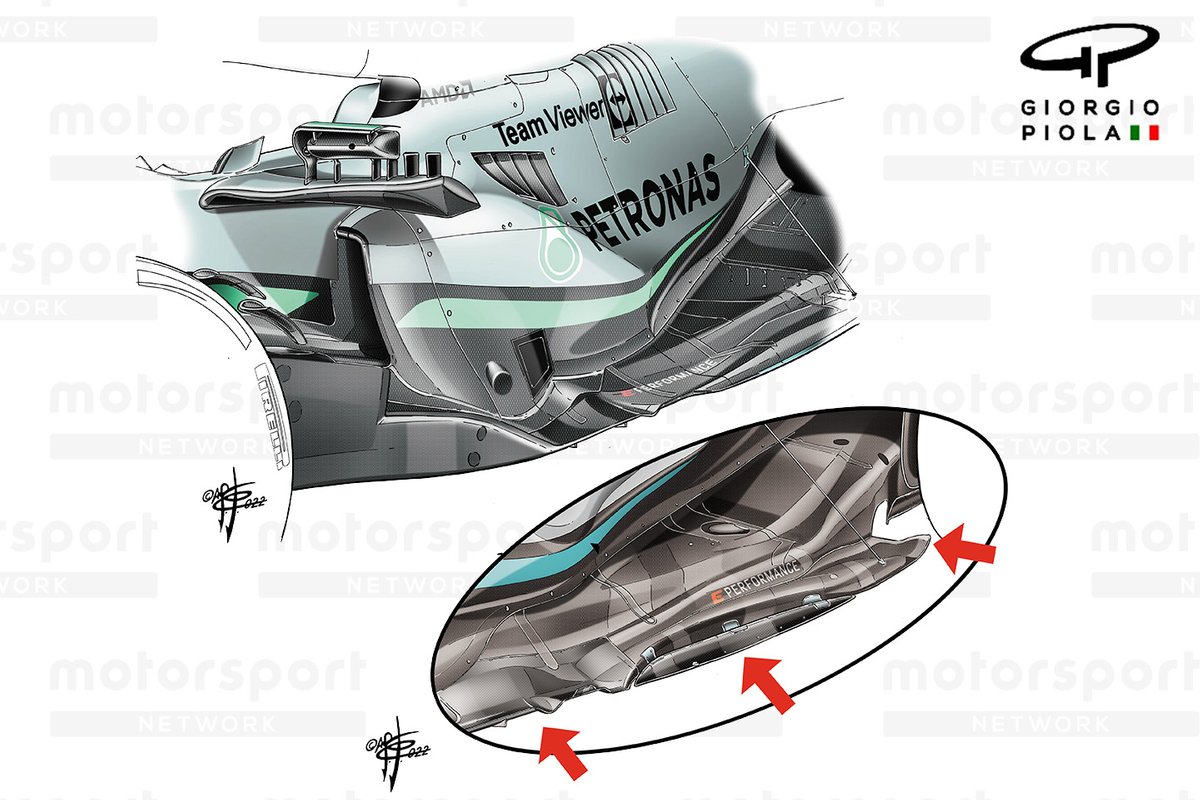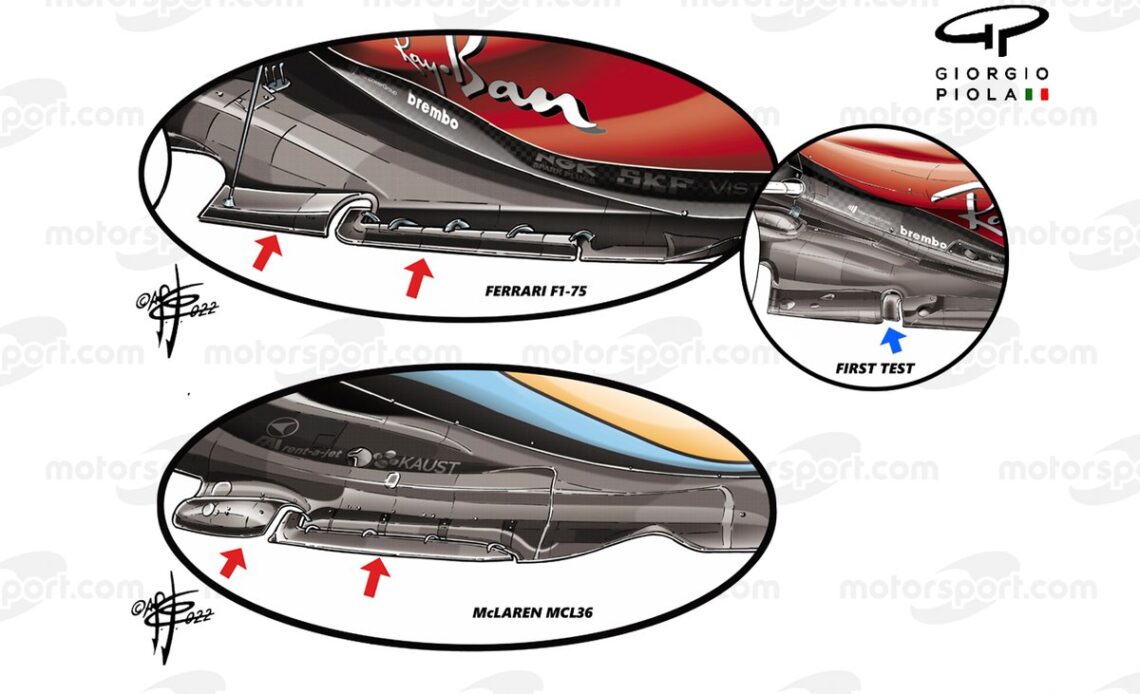As each race goes by, teams are accruing more data and have a better understanding of how to maximise performance, while combating the ill effects posed by porpoising.
The phenomenon, which caught the majority of the grid by surprise when their cars first hit the track, has been the main focus for teams as reducing its amplitude will unlock more performance. All of the teams suffered from porpoising to one degree or another, owing to a number of factors which result in its appearance.
A simplistic approach to quieting down the issue is to raise the car’s ride height but this would not only compromise the aerodynamic performance but also dramatically narrow the set-up options available too. For many, this means a more root and branch approach has to be sought, with some teams having to be more pragmatic about how long it will take to find an appropriate fix.
In the meantime, the development battle rages on and teams have been busy using new floor designs – not only as a means of improving aerodynamic output but also in order to save weight. The latter is exceptionally important when we consider that a large proportion of the grid hasn’t been able to make the minimum weight, even with it raised just ahead of the season to an eye-watering 698kg.
Given the increased loads that the floor now sustains, teams had to build in some additional margin. While some of that will have been removed by having a better understanding of the real world loads that are imparted upon different areas of the floor, the late change in the regulations to include a metal support stay ahead of the rear tyre has also been significant. This not only reduces porpoising but also offsets the rigidity it affords against any weight reduction plans.
Taking into consideration the lead time to manufacture the floor, which is by far the largest component installed on the car, the teams have opted for a patchwork-quilt style approach, allowing them to swap out sections of the floor, rather than having to manufacture an entirely new floor each time.
While this does add some weight, it makes them extremely agile when it comes to development and reduces costs, which is an extremely important factor when we consider the ramifications of the cost cap on teams this season.
Ferrari F1-75 and McLaren MCL36 floor comparison
Photo by: Giorgio Piola

Mercedes W13 new floor comparison
Photo by: Giorgio Piola
One of the most obvious areas of development, up and down the grid, is on the edge…
Click Here to Read the Full Original Article at Motorsport.com – Formula 1 – Stories…

